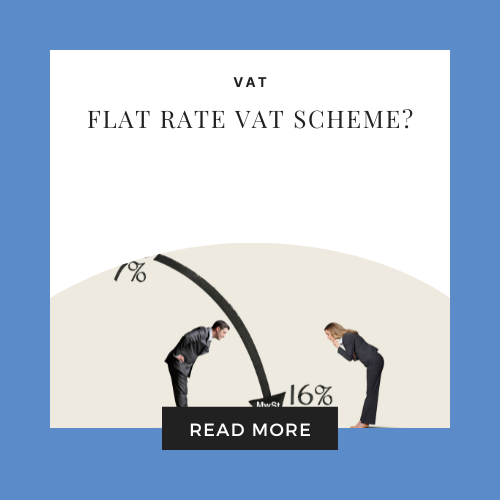Understanding the Flat Rate VAT Scheme: A Comprehensive Breakdown
#VAT • Oct 3, 2023 12:27:36 PM • Written by: Joanna Burns

Whether the Flat Rate VAT scheme is good for your business depends on various factors, including your business size, turnover, industry, and specific financial circumstances. Let's break down the advantages and disadvantages of the Flat Rate VAT scheme to help you make an informed decision:
Advantages:
Simplified Administration: The Flat Rate scheme can simplify your VAT accounting process. You pay a fixed percentage of your turnover to HMRC as VAT, which can make record-keeping and reporting less complex.
Time-Saving: Because the calculations are simplified, you might spend less time on VAT-related paperwork and administration.
Cash Flow: In some cases, you might end up paying less VAT than under the standard scheme, which could positively impact your cash flow.
Limited Input VAT Records: Under the Flat Rate scheme, you typically don't need to track or record input VAT on purchases. This can reduce administrative burden.
Small Business Benefits: Small businesses with relatively low input VAT may find the Flat Rate scheme financially advantageous.
Disadvantages:
Reduced Reclaiming: You can't normally reclaim VAT on purchases, except for certain capital assets over £2,000. This might result in higher costs if you make substantial purchases with VAT.
Loss of Benefit: If you often reclaim more VAT than you pay under the standard scheme, the Flat Rate scheme might not be beneficial for you.
Industry Variation: Different industries have different flat rates, and some rates might not be advantageous for your specific sector.
Limited Input VAT Recovery: If you're a business that regularly incurs significant input VAT on expenses, the Flat Rate scheme might not be the best choice since you can't reclaim most of this input VAT.
Complexity for Mixed Supplies: If your business provides both goods and services or is involved in complex VAT transactions, the Flat Rate scheme might lead to complications.
How to Decide:
Calculate the Numbers: Compare how much VAT you would pay under the Flat Rate scheme versus the standard scheme. Consider both current and projected turnover.
Industry Rate: Check the Flat Rate percentage for your industry. If it's relatively low, you might benefit more.
Input VAT: Evaluate how much input VAT you usually reclaim. If it's substantial, the Flat Rate scheme might not be suitable.
Cash Flow: Consider how the scheme might impact your cash flow. If the Flat Rate scheme offers better cash flow benefits, it could be a pro.
Future Growth: Think about your business growth plans. The Flat Rate scheme might be less favourable as your turnover increases.
Professional Advice: Consult with an accountant. They can analyze your specific circumstances and offer tailored advice.
In conclusion, the Flat Rate VAT scheme can be beneficial for some businesses, especially those with lower input VAT and in industries with favourable flat rates. However, it's crucial to perform detailed calculations, consider potential disadvantages, and seek professional advice before making a decision.
%20(transparent).png)
